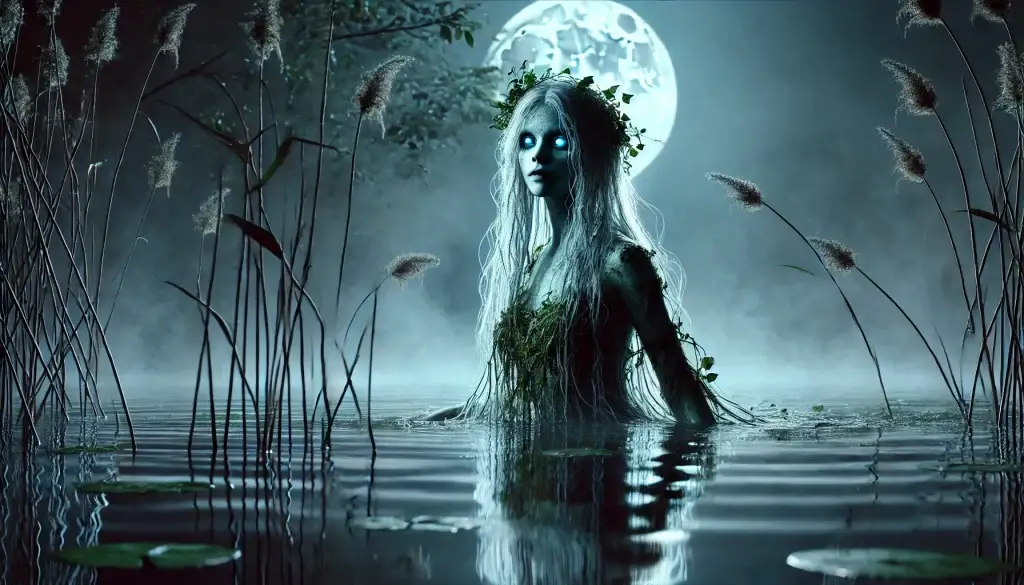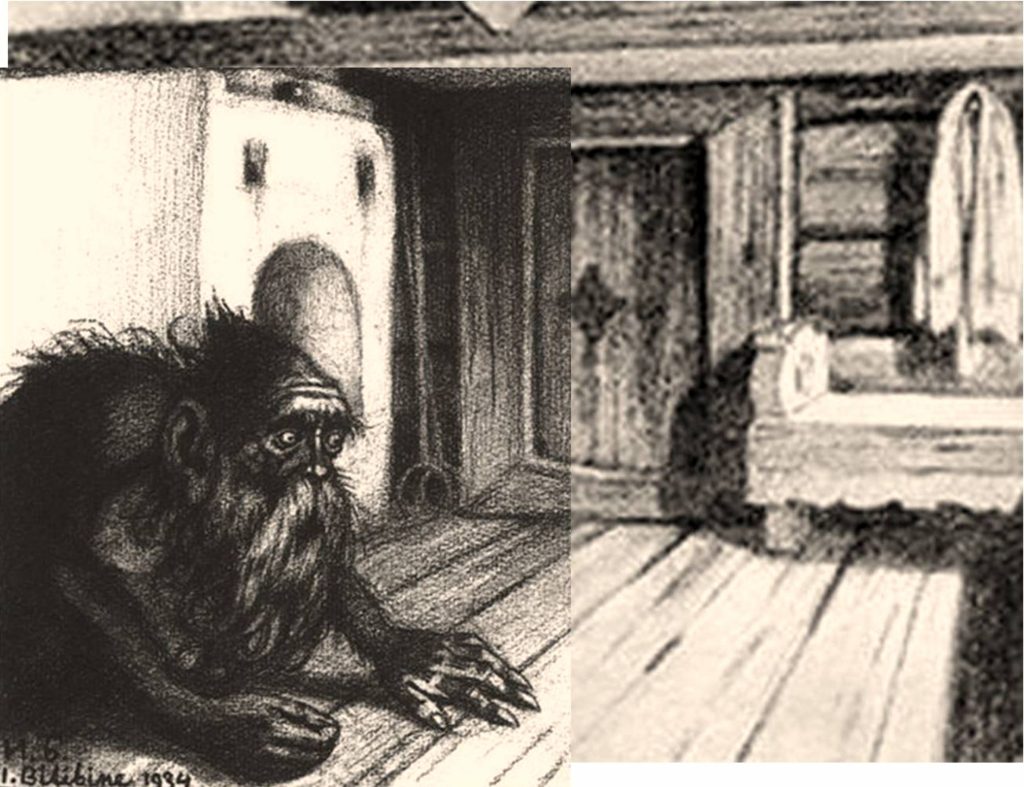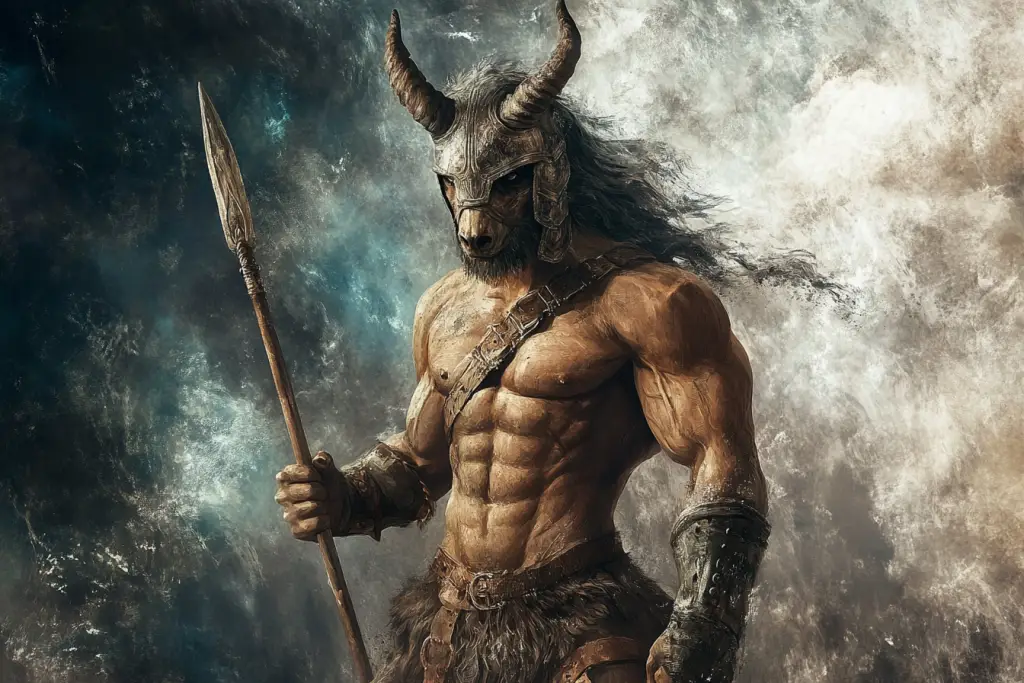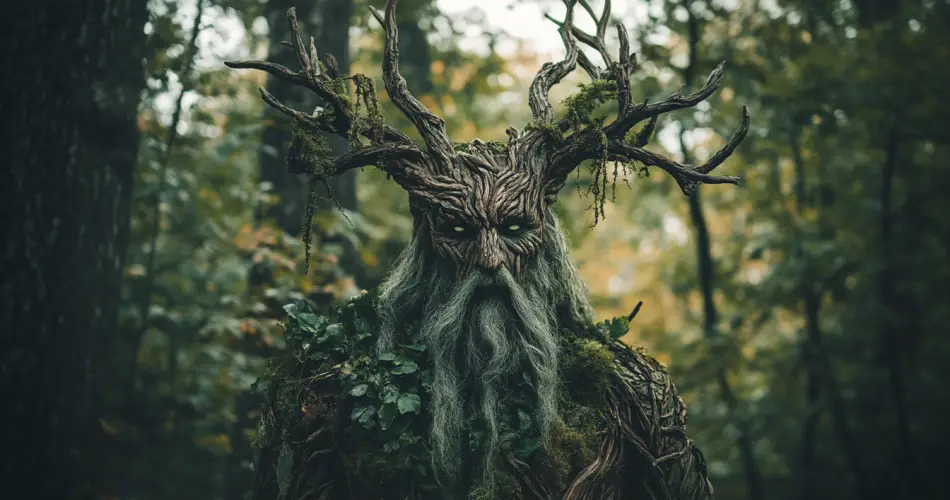Before the spread of Christianity in Eastern and Central Europe, the Slavs who lived in that region practised paganism. They believed in hundreds of mythical creatures that interact with humans from time to time.
These mythical creatures played an important role in shaping the spiritual and cultural identity of the Slavic people before and even after the spread of Christianity in the region.
Below is a list of some of the most interesting creatures in Slavic mythology.
Key Takeaways
- Some creatures in Slavic mythology were born out of imagination and were designed to scare people (especially children) into good behaviour.
- Creatures in Slavic Mythology might have been inspired by real animals that are not extinct and unknown to us.
- After the spread of Christianity among the Slavs, these mythical creatures were still respected.
- Some mythical creatures in Slavic mythology were either good or evil, depending on how they were treated.
Baba Yaga

Baba Yaga is an old ogress who is believed to live with two of her sisters in a wooden hut surrounded by a fence tipped with human skulls.
While some described Baba Yaga as a friendly creature who helps people, most sources agree that she is a wicked witch who loves to kidnap, cook and eat little children.
In some other stories, she is described as a thunder witch and the grandmother of the devil. When she is not in her hut, She rides through the Sky in mortar and pestle. She holds a broom, which she uses to sweep away traces of her passage.
Interesting Facts about Baba Yaga
1. Baba Yaga’s hut is believed to have Chicken legs. With these legs, she can move her hut from one place to another to avoid detection.
2. Sometimes, Baba Yaga accompanies death on his journey and feeds on newly released souls.
3. She is not always evil. In some stories, she is benevolent and provides help to those who seek her out.
4. Baba Yaga is strongly connected to nature. She is said to have control over Natural elements like the wind, storms, and animals.
Read Also: Japanese Vampire Cat that eats its owner.
What are Sprites? Everything you need to know.
2. Rusalka – Slavic Water Spirit

The Ruslaka is another fascinating creature in Slavic mythology. They are winged female spirits of water and woodland. In the pre-Christian Slavic societies, the Rusalka was linked to fertility and good harvests. They are said to come out of the water at night and provide the plants on the fields with life-giving moisture.
However, with the emergence of Christianity, the Ruslaka got a more malevolent reputation. They were described as unclean spirits of women who died before getting married or were killed by their abusive husbands.
These creatures entice men with their beautiful voices and then drown them with their long hair as soon as they get close enough. In some other stories, the Rusalka kill their victims by tickling them to death.
Interesting Facts about the Rusalka
1. The Rusalka hate absinthe and can be defeated with a leaf from the plant.
2. Rulsalka are most powerful during the Rusalka week of early July. At this time, they leave the water in large numbers and swing on the branches of willow trees.
3. The Rulsaka exist to avenge their unjust death. If this vengeance is taken, they move on to the underworld.
4. Some myths believe the Rusalka to be the unbaptized souls of dead children.
3. Domovoi – Slavic Household Spirit

Domovoi is one of the most popular creatures in Salvic Mythology. They are said to be spirits that was thrown out of heaven by the great god Perun. According to Slavic beliefs, the benevolent Domovoi land on houses, barns, and farmlands, while the evil ones land in the fields, woods, and wild lands.
The Domovoi like fire, so they live near the stove in the house. Although the Domovoi in the house are benevolent, they can burn the house down if they are made angry.
Pre-Christian Slavs recognized the protective role of the Domovoi, and when a family is moving to a new house, a fire from the old house is carried to the new house to welcome the Domovoi that has always been with the family.
A house, Domovoi is depicted as an old, grey-bearded man. He protects the household against hostile spirits as he bustles through the house at night.
Interesting Facts about the Domovoi
1. The Domovoi can appear in many shapes, such as small, hairy men, animals, and even household objects.
2. The female version of the Domovoi is called the Kikimora. These also live in the cellar or oven of the house.
3. The Domovoi are very protective of the children and the animals in the household.
Leshy – Protector of the Forest

Leshy is a forest faun or satyr. He is described as a shapeshifter who lives in wild places like the forest or woods. He is said to be the offspring of a mortal woman and a demon.
Although Leshy is not evil, he enjoys misdirecting mortals and kidnapping young women. He also kidnaps children maltreated by their parents and takes them to live with the forest folk.
Leshy protects all birds and animals in the forest, and his behaviour towards people often depends on how the person interacts with the forest. He has a wife, Leshacikha, and children, who are called Leshonki.
Interesting Facts about the Leshy
1. Leshy has the shape of a human; however, his skin and blood are blue, and he does not have a shadow. Also, his eyes and beard are green.
2. He also can shapeshift and change his size and stature to disguise himself as any person or anything.
3. Humans can thwart Leshy by wearing their clothes backwards.
5. Zmey – Slavic Dragon

Zmey is a mythical Slavic dragon with many heads. Because of its characteristics, the dragon is a sky warrior. With its fire breath and its shapeshifting ability, the Zmey is the ultimate fighting weapon.
According to Slavic mythologies, sometimes, the Zmey would shapeshift to mate with humans. The Slavs believed that the offspring of such intimate encounters would grow up to become great warriors and military leaders.
Interesting facts about the Zmey
1. Unlike typical dragons, Zmaj can act as a benevolent protector and a destructive force. In some legends, Zmaj protects villages from evil; in others, it brings devastation through storms or by stealing livestock.
2. Zmaj is highly intelligent and wise. In some stories, it holds vast knowledge about the world, nature, and even magical powers. He acts as a source of guidance for heroes who seek his counsel.
3. In some legends, Zmaj is associated with royalty and kingship. It is believed that certain rulers have Zmaj as a symbol of their power or even have Zmaj as an ally.
6. Bannik – Slavic Spirit of the Bath

The bath was a very important structure in ancient Slavic communities; it was there that divination occurred, and children were born. The Bannik is believed to be the spirit that lives in the bath.
According to Slavic beliefs, this mythical creature is a small, naked old man with a long beard. He stays in the outhouse of the bath and only allows three people to enter at once. He considers himself to be the fourth person, and if someone tries to take his place, he pours hot water on the person or strangles them.
The Bannik can foretell the future. To do this, the subject must place his or her naked buttocks through the half-open door of the Bathhouse and wait. If the exposed buttocks are touched gently, the future will be good. However, if it is clawed, it is a bad omen.
Interesting Facts about the Bannik
- If the Bannik is not offered the necessary rituals, he could get angry and cause the Bathhouse to burn down.
- Every Bathhouse has its own Bannik, and it is believed that a Bannik is not happy until a child is born in its domain.
- People are advised to leave some soap and water for the Bannik after bath, in case it decides to bath too.
Polkan – Half human, Half dog from Slavic Mythology.

The Polkan is the Slavic equivalent of Centaurs from Greek mythology. However, unlike Centaures, the Polkan is half human, half dog. It has incredible agility and uses a mace in battle. It is believed that the Polkan wields this weapon with incredible power.
This slavic mythical creature is similar to the Adlet in Inuit Mythology.
Interesting Facts about the Polkan
- In a local folk story, the Polkan is described as an enemy turned friend of Prince Bova Korolevich, a local folk hero.
- He is a benevolent creature who gave his life to protect the wife and child of the prince.
